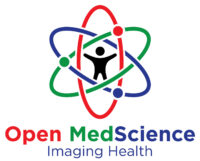Summary: Diagnostic imaging has revolutionised medicine, particularly in the fields of oncology and neurology. However, the psychological burden experienced by patients undergoing scans or waiting for their results remains under-acknowledged. This article explores the mental health impacts of diagnostic imaging, focusing on anxiety, stress, and anticipatory fear. Drawing on current research and patient experiences, it addresses how scan-related psychological distress—often termed “scanxiety”—can affect health outcomes and what healthcare professionals can do to mitigate it.
Keywords: Diagnostic imaging, mental health, oncology, neurology, scanxiety, patient experience.
Introduction: When the Machine Becomes the Monster
In modern hospitals, the hum of MRI machines and the whirr of CT scanners represent the technological edge of diagnostic medicine. Yet for many patients, especially those undergoing repeated scans for cancer or neurological conditions, these machines evoke feelings far removed from clinical precision. For them, the scanner is not just a diagnostic tool—it is a source of emotional turmoil, symbolic of uncertainty, disease progression, and sometimes mortality.
Medical imaging procedures are often psychologically taxing, not just because of the procedure itself but due to the period surrounding it. The days leading up to a scan, the wait for results, and the implications of those results can cause acute psychological distress. This phenomenon is increasingly recognised but still insufficiently addressed within routine clinical care.
The Rise of Diagnostic Imaging and the Emotional Gap
The use of imaging in diagnosis and disease monitoring has grown substantially over recent decades. Magnetic Resonance Imaging (MRI), Computed Tomography (CT), and Positron Emission Tomography (PET) scans are integral to monitoring cancer progression or neurological changes, such as in multiple sclerosis, epilepsy, and dementia. These tools provide clinicians with unparalleled insight into the body’s internal workings, often detecting issues before symptoms appear.
However, the clinical emphasis on obtaining accurate diagnostic data can overlook the patient’s subjective experience. While the physical risks of imaging are usually well-managed, the emotional and psychological consequences are often underplayed or disregarded. For individuals living with chronic or life-threatening illnesses, scans become regular landmarks in their treatment journey—markers that can bring relief, dread, or both.
The Concept of ‘Scanxiety’: Fear Before the Findings
One term that has entered patient and clinical discourse in recent years is “scanxiety“. It refers to the anticipatory anxiety experienced before, during, and especially while waiting for results from a medical scan. Although not formally recognised in diagnostic manuals, it is widely reported by patients and acknowledged in clinical studies.
Patients with cancer often describe the days leading up to a scan as some of the most emotionally difficult of their journey. The scan is a moment of reckoning—a point at which the success or failure of treatment may be made clear. In neurology, patients with progressive diseases may fear confirmation of decline, which has profound implications for autonomy, employment, and family life.
Scanxiety can be characterised by restlessness, sleeplessness, irritability, reduced appetite, and, in some cases, panic. For individuals with previous trauma or a history of mental illness, these episodes can exacerbate existing conditions, compounding their vulnerability.
Waiting Games: The Psychological Strain of Uncertainty
Waiting for scan results is arguably more distressing than the procedure itself. In oncology, results may indicate remission, stability, or progression. Each outcome can dramatically alter the course of treatment and the patient’s outlook on life. Similarly, in neurology, a scan might determine whether a patient’s condition is stable or worsening, potentially leading to significant changes in daily living.
Several studies have shown that the period between scanning and receiving results is associated with heightened cortisol levels, increased blood pressure, and sleep disturbances. These physiological responses mirror those observed in acute stress reactions and, if prolonged, can impact immune function and overall health.
This uncertainty also affects carers and families, many of whom feel helpless in the face of waiting. For them, the scan is not just an image—it is a forecast of their loved one’s future. The lack of clarity during these intervals can cause tension, depression, and relational strain.
MRI Claustrophobia and the Sensory Experience of Scanning
The design of imaging machines can further intensify psychological distress. MRI scanners, in particular, are enclosed tubes that can provoke claustrophobia, especially when a patient is required to lie motionless for extended periods. The loud noises, the absence of natural light, and the impersonal nature of the machine can create a sense of isolation and fear.
Patients with anxiety disorders, PTSD, or sensory sensitivities (such as those on the autism spectrum) may find the experience overwhelming. For some, the scan may trigger flashbacks or panic attacks. In extreme cases, patients refuse to undergo further imaging, potentially compromising their clinical care.
Sedation and anti-anxiety medication are sometimes offered, but these are reactive measures. A more proactive approach would involve providing better information, psychological support, and machine design improvements to mitigate stress responses.
The Psychological Cost of Routine Surveillance
For patients in remission or with stable disease, routine surveillance scans offer a double-edged sword. On the one hand, they provide reassurance that the disease remains under control. On the other hand, they continually remind the patient that the threat has not disappeared; it has merely retreated.
This can lead to a phenomenon known as “survivor’s stress”, in which individuals who are otherwise physically well continue to feel psychologically unwell. The scan becomes a periodic reminder of vulnerability, often reigniting trauma or feelings of impending doom. Even in cases where results are consistently stable, the emotional labour of repeatedly confronting uncertainty can erode wellbeing over time.
In neurology, patients undergoing regular scans to monitor conditions such as multiple sclerosis or epilepsy may experience similar cycles. Each scan may reinforce feelings of unpredictability and powerlessness, especially when results are ambiguous or inconclusive.
Healthcare Communication: A Double-Edged Sword
The way in which results are communicated has a significant influence on a patient’s psychological response. Delays, vague language, or overly technical explanations can increase distress. Conversely, clear and empathetic communication can help patients feel more in control, even when the news is unfavourable.
However, many healthcare systems are overburdened, resulting in generic communication methods, such as standard letters or online portals. While efficient, these can come across as cold or lacking in empathy. Some patients report receiving results without context, leading them to search for answers online, which can deepen anxiety.
There is growing advocacy for structured communication protocols that prioritise not just the delivery of information but the emotional state of the recipient. In practice, this might involve preparatory discussions, immediate follow-up support, or access to psychological services when results are distressing.
Interventions: What Can Be Done?
Addressing the psychological effects of diagnostic imaging requires systemic change. First, more attention must be paid to patient education. Individuals undergoing scans should be informed not just about the technical procedure but also about the possible emotional responses they may have.
Second, psychological screening tools could be employed before and after scans to identify patients at risk of scanxiety or related stress. Offering pre-scan consultations with mental health professionals or trained nurse specialists can also be beneficial.
Third, healthcare environments can be modified to reduce stress. Noise-cancelling headphones, guided meditations, and calming visual stimuli in waiting areas and scan rooms have been shown to improve patient experience. While these measures may seem minor, they can significantly reduce perceived threat and discomfort.
Finally, training radiographers and clinical staff to recognise and respond to signs of emotional distress is crucial. Empathy and reassurance from staff can act as an immediate buffer against anxiety and promote a sense of safety.
Looking Ahead: Research and Policy Needs
Further research is needed to quantify the psychological impact of diagnostic imaging, particularly across various conditions and demographic groups. Understanding which patients are most vulnerable to scanxiety and how it manifests will be key to designing targeted interventions.
Policy frameworks should also consider mental health outcomes as part of imaging protocols. This includes integrating mental health professionals into radiology departments and ensuring rapid access to counselling or support when needed.
Given the increasing reliance on imaging in long-term disease management, the emotional experience of patients should not be overlooked. Instead, it should be treated as an integral part of clinical care.
Conclusion: Seeing the Whole Patient
Diagnostic imaging offers invaluable insight into the human body, but it must also consider the human mind. For patients in oncology and neurology, the scan is not merely a photograph of tissue—it is a portrait of hope, fear, and possibility. Healthcare systems must evolve to address this duality, recognising that every image comes with an emotional imprint.
By acknowledging and addressing the psychological toll of diagnostic imaging, clinicians can improve not only patient satisfaction but also overall health outcomes. A more holistic approach—one that sees the person as well as the picture—will ultimately lead to better care, better recovery, and a more humane medical experience.
Disclaimer
The content of this article is intended for informational and educational purposes only. It does not constitute medical advice, diagnosis, or treatment, and should not be used as a substitute for professional consultation with qualified healthcare providers.
Open Medscience does not endorse or recommend any specific tests, physicians, products, procedures, or opinions mentioned in this article. The views expressed are those of the authors and contributors and do not necessarily reflect those of any affiliated institutions or healthcare organisations.
While the article discusses psychological responses to diagnostic imaging, individuals experiencing anxiety or distress related to medical procedures are strongly encouraged to seek guidance from a medical or mental health professional.
Open Medscience shall not be liable for any consequences arising from the use or misuse of the information presented herein.
You are here: home » diagnostic medical imaging blog »



